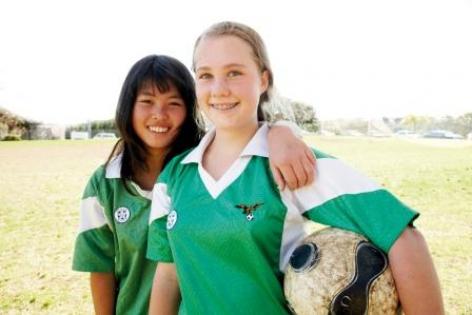Physical activity is one of the key factors that contribute to long term better health outcomes through a reduction in the incidence of chronic disease.
According to the most recent Australian Bureau of Statistics (ABS) data on participation in physical activity, the decline in organised sport participation between the ages of 14 and 15 years is startingly significant. From ages 5-8, the participation rate for both boys and girls is 58%; 68% for ages 9-11; 65% for ages 12-14; and 36% at age 15-17 years. The participation rate for boys and girls is about the same at the 15-17 year age group, but because boys have a significantly higher participation rate at the younger age groups (between 12-20% more), the dropout or attrition rate is much higher.
The reasons for this may be many and diverse.
The most obvious is that as teenagers become more independent, they develop other interests and some even become more studious! Another is that participation becomes more selective at older age groups, so it based more on ability than interest and the enjoyment level drops away. There may be a convenience factor as schools or training grounds change. And another is the cost of playing junior sport as a barrier to participation. The cost can be several hundred dollars which, if multiplied across more than one child, may be prohibitive.
A recent study published in the Journal of the American Medical Association which tracked 1,000 children over seven years showed that even very active young children experience a drop in physical activity as they reach teenage. The US study showed the same dropout rate at age 13 as the ABS data shows for Australia for age 15 with the reasons given being negative experiences such as “not having fun”, “too much pressure” or “not enough time”.
Yet the benefits of teen exercise and sports participation are clear. Overall, teenagers who take part in sports have better results at school, have fewer behavioural problems, are less likely to use drugs and are less likely to drop out of school.
Most surprisingly, the study found that, unlike other preventative health measures where parents have a strong role model influence, the physical activity level of parents does not appear to have a significant effect on teenagers. The researchers suggested this is because parental exercise does not happen as part of the family but tends to be a solo activity, such as at the gym, on the golf course, the tennis court or walking or running.
But the study did identify three possible strategies parents can take to maximise the chances of teenage children continuing to play sport.
- Find a sport you can play or do with them. They may turn up their nose at this at first, but it is something you can share. For example, many soccer football or netball clubs around Australia have teams that cater for very young age groups through to adult age groups. Otherwise, start on a walking or running program with them with the aim of participating in a fundraising fun run; play tennis together; give them golf lessons (but make sure they walk the course, not use a buggy!).
- Make sure your child has a friend doing the same thing. Professor Alan Smith of Purdue University in the USA (who is one of the co-authors of this study) said that another study of 200 12 year olds showed that the most physically active kids were those who had a close friend also taking part in the sport. If the local sporting club doesn’t allow this to happen because it wants to win the competition, go to another club or find another sport.
- The most important factor is logistical support. While parenthood never ends, the ‘heavy lifting’ only lasts for 18 years and, if you can, it is worth investing the time in going along on registration day, taking them to training, watching all their games and even maintain the interest by watching the professional version of the sport together. This way you also find out if the sports club your teenager has joined is the right one. If he or she spends more time standing around than running around, it means there’s too many kids and not enough coaches and your child may miss out unless he’s the next Harry Kewell or she’s the next Liz Ellis. It’s important for you to know if your child is getting enough time actually playing the game.
Winter sports are taking registrations now with most seasons starting to coincide with Term 2 at school. As a start with the two most popular sports to play for young people, check out:








 Agree (2)
Agree (2) Disagree (
Disagree (







__small.png)










